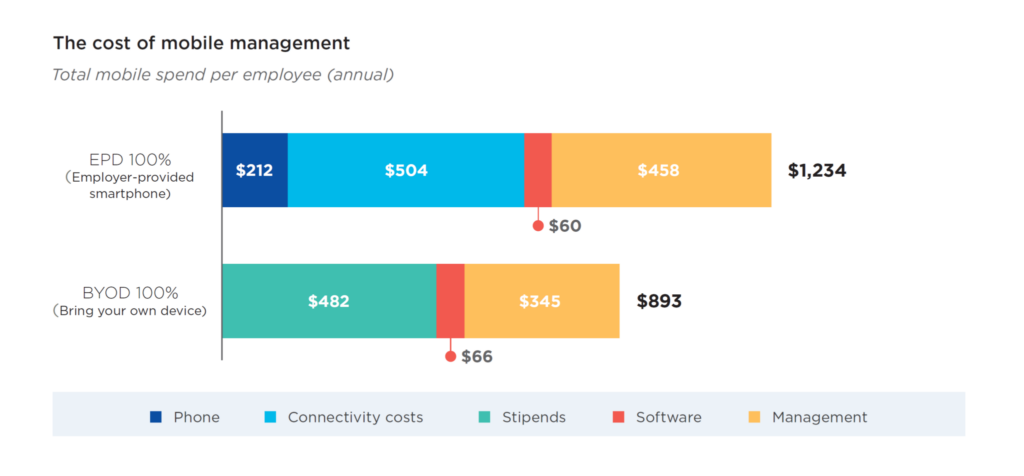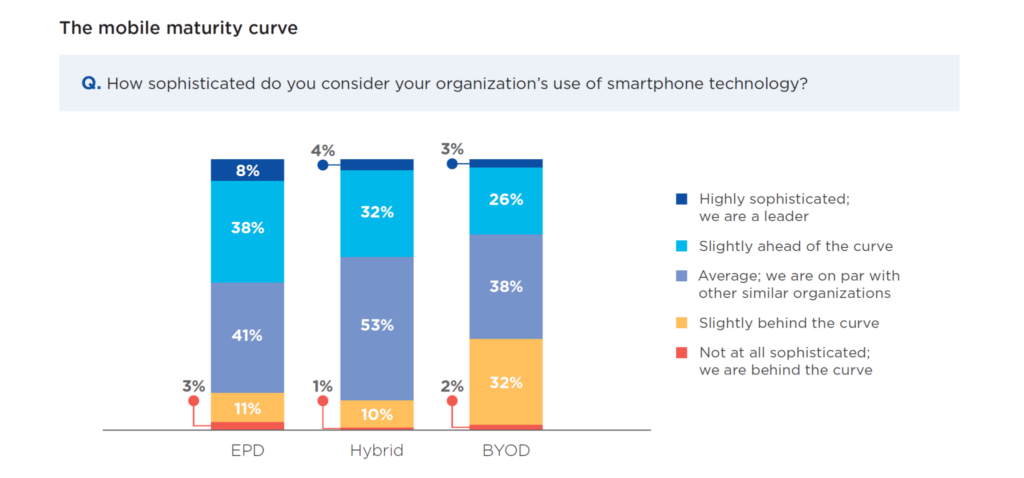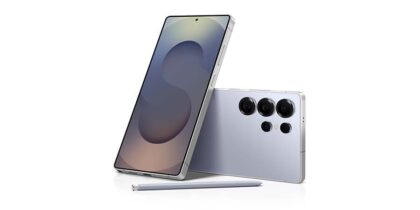When employees began bringing shiny, new mobile devices into the office in the late 2000s, many business and IT leaders spotted an opportunity. They recognized the productivity-boosting potential of mobile-connected workers, and — since almost everyone had their own mobile devices — hoped this “digital transformation” would come at a big discount for the CFO.
As every CFO knows, however, there’s no such thing as a free lunch. And the trend that soon came to be known as Bring Your Own Device, or BYOD, wouldn’t turn out to be free either. IT teams quickly realized that managing BYOD required specialized skills and additional staffing, while HR leaders found that employees increasingly expected a monthly stipend to compensate for the use of their personal devices for work.
More than a decade on — and after the seismic shift in workforce mobility over the last few years — mobile devices are more central to employee productivity than ever before. But the debate over BYOD vs. company-issued mobile devices persists.
Is letting employees use their personal devices to connect freely to corporate email and other business systems the smart way to embrace the mobile era? Or should businesses be providing devices to their teams, and taking a more managed approach to mobile security? And, what exactly is the cost savings achieved through BYOD, if any?
These are the questions we sought to answer in the 2022 edition of our Maximizing Mobile Value study. Partnering with Oxford Economics, we surveyed 500 U.S. executives and 1,000 employees at small and medium-sized businesses (SMBs) to better understand how they approach mobile enablement today, what it costs them and what benefits they accrue.
So, what did we find out? Here’s my summary of seven key learnings. (For a deeper dive, download the full Maximizing Mobile Value study, or use our Mobile Cost Calculator to compare your investment in mobility with industry averages for similar-sized companies.)
1. BYOD remains the norm
First up, while there’s still a split in strategies, BYOD remains the more popular approach, particularly among smaller organizations. Only 15% of businesses surveyed issue mobile devices to all employees. Another 46% take a hybrid approach — providing devices to some employees while opting for BYOD for the rest, typically based on seniority. That leaves 39% of companies that rely fully on a BYOD approach when it comes to mobile devices.
2. Mobile stipends are mandatory
For those companies taking a BYOD approach, paying a mobile stipend is virtually mandatory today. Ninety-eight percent of BYOD companies say they compensate employees for the use of their personal mobile devices, with the average stipend now reaching $40.20 per month. BYOD companies also indicate that administering that stipend is a significant part of their mobile management costs.
3. BYOD doesn’t save you as much as you might think
Looked at holistically, the cost delta between BYOD and employer-issued mobile device policies is less than many business leaders perceive it to be. Organizations that issue mobile devices to workers spend an average of $1,234 per employee per year when taking into account device acquisition, mobile service plans, in-house or outsourced management costs, and mobile device management (MDM) software. Companies opting for a BYOD approach report spending $893 per employee annually when combining stipends, in-house and outsourced management, and MDM software.

4. BYOD companies are lagging, and they know it
Across a range of metrics, companies opting for a BYOD approach seem to be lagging when it comes to benefits accrued from mobile. BYOD organizations deploy fewer business apps (5.1 to 7.9) and feel mobile devices are less critical to “agility and speed of decision making” (56% to 63%) and play a lesser role in delivering “customer service and satisfaction” (48% to 55%). Asked how sophisticated they view their own use of mobile, 34% of BYOD companies believe they are lagging, more than double the rate of those who issue mobile devices to some or all employees.

5. Lack of device management puts data at risk
BYOD often means devices that are unmanaged, and that is putting business data at serious risk. More than 9 out of 10 companies that issue mobile devices to all employees have MDM software in place, enabling them to establish security policies and remotely wipe data from lost or stolen devices. For companies opting for BYOD, just 4 out of 10 have an MDM deployed. Among those BYOD organizations, 48% say they have seen malware introduced through an employee’s personal phone.
What's next for the future of finance?
Samsung surveyed 1,000 finance professionals about the future of mobile tech. Here's what they said. Download Now
Businesses that provide mobile devices to employees are seeing clear benefits from their investment in MDM. They are more satisfied with their mobile security (53% vs. 44% for BYOD) and are more likely to say their current mobile phone enablement strategy helps them reduce risk (31% vs. 20% for BYOD).
6. Privacy is a solvable problem
Privacy remains a key employee concern when it comes to using company-issued mobile devices for personal use. In fact, three-quarters of employees say they keep a personal phone as well as their work-issued device. However, data separation technology that establishes hardened personal and work containers on the device could address these worries. Eighty-one percent of employee respondents said they would feel more comfortable using a device with separated work and personal spaces in place.
7. BYOD could be hurting retention and growth
Last, but not least for business owners and executives, issuing mobile devices to employees appears to correlate to higher growth and lower employee turnover rates. For organizations that issue mobile devices, 53% reported growth of 5% or more in the past three years, compared to 45% for BYOD companies. As employers struggle to retain talent, companies that issue devices were also found to be more likely to have an annual turnover rate of below 10% (51% vs. 37% for BYOD organizations).
Taken together, the findings of the Maximizing Mobile Value study suggest that businesses need to carefully assess their approach to mobile enablement. While BYOD may save companies in direct costs, company-issued devices provide a clear upside in terms of productivity, device management, data security, and, potentially, growth and retention.
Like all IT initiatives, the devil is in the detail: A well-managed BYOD program may well still produce better outcomes than a poorly executed company-issued mobile device deployment. But the data suggests that providing mobile devices to employees provides a stronger foundation for success.
Download the full 2023 Maximizing Mobile Value study for a deeper read on BYOD vs. company-issued mobile devices. To better understand your total investment in employee mobility, use our Mobile Cost Calculator.








